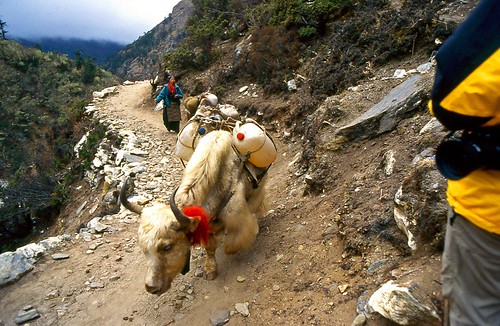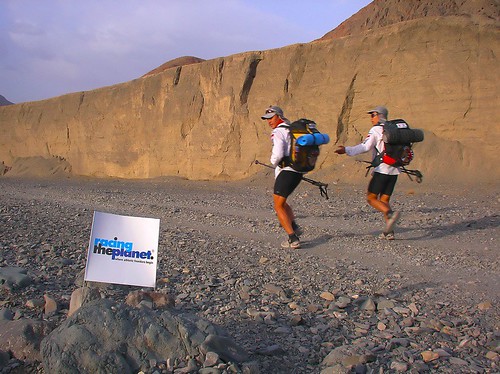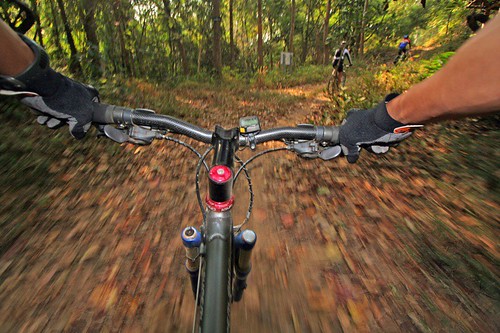
For a short time in the 90’s, I owned a Nikon F4. It was a top of the line pro body that produced excellent images, but was a beast to carry. It was fairly new when I took it (big mistake, but that’s another story) trekking with me to Nepal to cover an assignment for a magazine. Early on in the trek, I carried all my gear. Then I engaged a porter to help me out. He carried most of my gear while I carried only a small daypack with daily necessities like a jacket, money, and all my photographic equipment. Then I gave him my tripod. Then he took my 300mm f4. Eventually I was left carrying just the F4 body and a few small lenses, and even that was a burden. Soon after that trip, I sold off my f4. The F4 may be the best camera for someone else, but it just wasn’t for me.
So what’s the best camera? There isn’t one. As a participant in adventure sports, it’s going to be the camera you are willing to take with you. Only you can decide for yourself the balance of getting images versus how much that camera is going to impose on your participation. I can suggest some guidelines, and those are: weight, image quality and replacement cost.
Weight
Light = Fast, and weight is often going to be the overriding factor. When I ran a 7-day ultra-marathon in the Gobi Desert in 2005, I carried a small point and shoot - a Pentax Optio 43WR, in a Lowepro pouch attached to the shoulder strap of my backpack. It was light, water-resistant, offered adequate image quality and hardly imposed on my participation of the race.

Image Quality
When having the flexibility of an SLR is more important to me, it’s the Canon Rebel XT 350D or XTi 400D. Like all electronic equipment, they are fragile and highly hydrophobic. I carry mine in a chest pouch for rapid access with a couple of zip-lock bags in the pocket (see my post Replacement ‘Galen Rowell’ Chest Pouch in January).
For a typical wilderness trip of 5 days, I take about 1000 shots. The Canon 350D will need 2 batteries, and paired with my main working lens, the Canon 10-22mm, it has a total weight of 954g (485+385+42+42g). By comparison, the Nikon D200 + 12-24mm DX weighs 1475g (830+485+80+80g) but offers weatherproofing and a better build. A Canon 5D + 17-40mm L offers the best image quality for the maximum amount of weight I can conceive of carrying, and that’s before adding the weight of a flash unit as it doesn’t have a pop up flash. Don’t get me wrong, I’d love to have a Nikon D200 or Canon 5D and, if my priorities change, I’ll be shooting with one of those. They are beautifully built tools. Enough said.

Since adventure photography is mainly about shooting people having fun, I carry the same lenses a photojournalist would use: A Canon 10-22mm lens (16-35mm Full Frame Equivalent) and a medium telephoto zoom like the Sigma 50-150mm. Prime lenses just don’t offer the flexibility of being able to zoom in quickly when you need to work fast.
Replacement Cost
This is basically the price of the camera and how much it is going to cost you to get it replaced if you smash/submerge/drop/lose or otherwise damage it. It is the risk of loss or damage to your camera that is going to make you think twice about bringing your expensive machine into a hostile environment.
I have no hesitation about tying my Canon 350D to my body with a bungie cord
 and quickly activating the self-timer on easier terrain to get shots like the one on the top of the page. My mobility on the bike is a little bit compromised and when I eventually pushed it too far, I crashed and went over the handlebars. I’m not too sure I would do it with a Canon 5D which costs 4 times as much.
and quickly activating the self-timer on easier terrain to get shots like the one on the top of the page. My mobility on the bike is a little bit compromised and when I eventually pushed it too far, I crashed and went over the handlebars. I’m not too sure I would do it with a Canon 5D which costs 4 times as much.One tip to bringing back great images is to shoot early in the day. Not only is the light better, but you probably still have the mental capacity to be on the lookout for photo opportunities. You will need to visualize the shot you want to take, quickly move ahead into position and get the camera ready. If you blow the shot, it’s unlikely that your teammates will return for another shot. In a non-competitive environment, you can ask your buddies to slow down until you are ready, or re-do the section. Finally, whatever camera you choose, make sure you have ready access to it. It’s no good to you if it’s buried deep in your pack. Good luck!
Photos:
Top: Get Out Of The Way! A yak train moving supplies up the Khumbu. Taken with a Nikon F4, 24mm lens.
2nd: Going Fast with a Canon 350D bungied to my body, 10-22mm lens, pop up fill flash
3rd: Racing The Planet with my teammates at The Gobi March 2005, Pentax Optio 43WR
Bottom: Crash with my Canon 350D still bungied to my body, photographed by my wife, Laura, with a Pentax Optio 43WR.

No comments:
Post a Comment